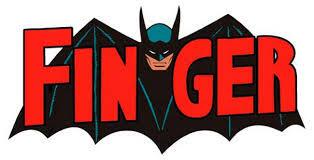 NEWARK, N.J. — It happened so fast that no one reallyknew what happened until they saw the blood. Even then it took a second for it
to register that, yes, it was blood from a man’s face that was dropping onto
the ice at the Prudential Center on Thursday night as if it were being released
from a squeezie bottle.
NEWARK, N.J. — It happened so fast that no one reallyknew what happened until they saw the blood. Even then it took a second for it
to register that, yes, it was blood from a man’s face that was dropping onto
the ice at the Prudential Center on Thursday night as if it were being released
from a squeezie bottle.
We saw the Devils’ player unleash a shot and Ian Laperriere go down to the ice to block it, but no one expected what we saw next.
Interestingly, one of the best ways to remove blood from an article of clothing or fabric is with an ice cube. According to one of those helpful hints web sites, the ice will melt through the fabric and take the blood with it. However, blood stains on the ice require a little more elbow grease to come out, and the trail Laperriere left on his way to the Flyers’ dressing room took a stoppage of the game and the ice crew to skate out with tools to chip it away.
Nevertheless, it only took 60-to-70 stitches over Laperriere’s eye to stop the bleeding. Who knew a piece of vulcanized rubber traveling approximately 100-mph could cause so much damage to a man’s face. Moreover, who knew a man would be so crazy enough to put his face in the way of something traveling so fast all because he felt it would be beneficial to his teammates? Or, after the stitches and the gut reaction that he had lost his right eye, why would the guy boast that he would do it again if needed?
“I do what I do and I don’t think twice about doing it,” Laperriere said. “The next game, if I get a chance to block a shot I’ll go down, because that’s what I do. The day I stop doing that, I’ll retire. Call me dumb, call me stupid, whatever. I block shots.”
Laperriere is a hockey player. There is no reason to delve more deeply into the reason why he endangered his life than that.
“He would have been back on the bench if they could have gotten him stitched up in time,” Flyers coach Peter Laviolette said.
Laviolette is speaking with the knowledge of precedent since Laperriere, a hockey player’s role player who thrives on his work in killing penalties, took a puck to the face earlier this season that opened up his mouth as if it were a piñata. In that case he needed more than 100 stitches to close the wound, and since it occurred early in the game, Laperriere was back on the ice by the third period.
Hockey player.
Just don’t equate the term “hockey player,” with “stupid.” Though his eye was stitched back together, swollen and presumably full of anesthetic while blood stains and scratches from past battles were flecked on his face, the hockey player didn’t want to hear about the inanity of his act. In fact, still dressed in his uniform undergarments and soaked with sweat and blood, Laperriere asked a scribe who questioned his mental capacity if he wanted, “to take it outside?”
Then he relented that he will wear a face shield in the future so he doesn’t have to continue to go back home and have his kids see him with his face all chewed up. After all, he’s not going to stop blocking pucks with his face if needed.
Laperriere’s teammates just kind of shrug off his talk. Broken bones, stitches and pucks to the face are just an occupational hazard.
“You’ve got a good-looking guy like Lappy throwing his face in front of one there,” he said. “Sometimes blocking one with your face is what it takes. When guys see that on the bench, that only makes them want to push harder and sacrifice more.”
Said goalie Brian Boucher: “You don't win when guys aren't paying the price. Without him, we're not going to the second round. We'd be dead.”
Presumably there will be some damage from this style of play in the future. Charming and astute, Laperriere understands this and told us after he the game that he wanted to be able to see his “kids with both eyes.” Similarly, 10 years prior in the Eastern Conference Finals against the Devils, Keith Primeau got into a fight with Randy McKay in his first game back after a concussion sent him to the hospital.
Primeau thought his team needed a spark, he said, noting that his actions were probably stupid in the grander sense.
“I thought our team needed a spark,” Primeau said at the time, noting that he envisioned Lisa sitting in the stands with her head in her hands as he brawled with McKay.
“I realize it may not have been the best thing to do. I’m a father and a husband, but at the same time I’m a hockey player… ”
Ultimately, Primeau’s career was cut short because of too many concussions, and it appears likely that Laperriere will have to undergo some sort of procedure on the orbital bone surrounding his eye. Isn’t that a bit of irony? It took approximately 70 stitches to close up the wound and it will probably just have to be reopened so a surgeon can fish around in there.
Hockey player.






















